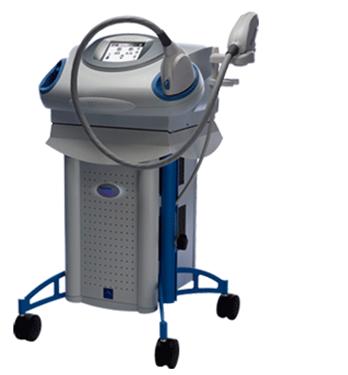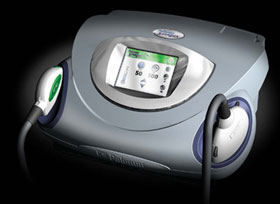 Your cosmetic lasers and IPLs need some basic care and maintenance. What should you be doing?
Your cosmetic lasers and IPLs need some basic care and maintenance. What should you be doing?
Many people ask me if there is anything they can do to prevent their laser from breaking down without having to call in a technician every time. While there is not much you can do for normal wear and tear breakdowns, there are a few things you can do that will ensure your unit is in top condition between maintenance checks. This is in no way intended to replace any manufacturer's recommended periodic operator maintenance procedures, nor is this intended to replace periodic maintenance in any way. I still recommend that every laser used on patients should be checked every six months by a trained professional.
Basic checks on your laser can be broken down into modules. To make certain practices a habit, most people need to know why they are performing a task. I will first break down basic laser systems into the 5 modules that make up every laser, and then the basic things you can do to maintain these modules:
Power Supply / Exciter
Stimulated emission of radiation occurs when a lasing medium is excited, and forced to release it's own photons in a wavelength specific to that lasing medium. CO2 lasers, for example, use either an RF exciter, or a DC exciter. Yag lasers use a high powered flashlamp- it is not the flashlamp light that is collimated and amplified, rather the flashlamp excites the Yag crystal and forces it to release photons in wavelegnth specific to the crystal, ie. 1064nm. An exciter can also be a chemical reaction, as with Excimer lasers (excited dimer). A bad power supply will result in some obvious errors like the laser not powering on, but it can also result in intermittent issues or problems more difficult to find like peak power settings not being selectable, or certain pulsewidths not being available.
What can you do to maintain your power supply? Power supplies are mostly affected by wall outlet power. Ensure you are using medical grade power outlets, and a dedicated line. A medical grade outlet will be indicated by a green dot on most 110VAC outlets, but 220VAC outlets will not have this dot. For 220VAC systems, make sure you are getting "healthy" power... that is anywhere between 218VAC and 237VAC for most systems. I don't know of any systems rated for higher than 240VAC, but I have seen power as high as 247VAC at some facilities. This is not acceptable, and power should be maintained in the safe zone for your laser. This info is available in your operator's or service manual.
Laser Cavity / Resonator / Laser Head
This is the heart of your laser. This consists of your lasing medium (crystal, dye, or gas), a highly reflective surface or HR mirror, and an output coupler or partially reflective surface. Oftentimes the flashlamp will be in the laser cavity itself as with Yag and Alex lasers. Many issues with other system modules will cause problems in the laser cavity. The worst enemies of your laser cavity are heat, and of course, time. An old, worn, or dirty laser cavity will overwork your power supply which is working extra hard to excite your medium because the internal test results are low. This may result in power output errors, detector mismatch errors, flashlamp ignition errors, etc.
What can you do to maintain your laser cavity? The best way to maintain your laser cavity is to monitor your power output over time. Have your laser checked every six months by a trained professional, and at least once a year, have them inspect the internal condition of your cavity. Though you may get an unexpected expense at a random six month interval it is much better to catch problems during these inspections rather than having your unit shut down during a case, and resulting in canceled appointments. Maintaining your other subsystems also extends the life of your resonator.
Optics Train / Beam Path Optics
These are the optics between your laser cavity, and your delivery optics. Some laser don't have anything more than a fiber focus lens between the output coupler and fiber. The Cynosure Apogee Elite, for example, on the Alex side, has nothing more than a surface output coupler (a partially reflective surface on the output side of the Alexandrite crystal), and from there the beam goes into a fiber focus lens, and directly into the fiber. A Cutera Xeo's crystal is different- it requires an external output coupler, and a rear HR mirror. The beam bath also takes two turns before it reaches the fiber focus lens. CO2 lasers, and some Erbium lasers use an arm. Every knuckle in the arm has a mirror that can be adjusted and may require cleaning over time.
What can you do to maintain your cosmetc lasers optics? Best advice- keep your room lint and dust free. I can't emphasize this enough: KEEP YOUR PROCEDURE ROOM FREE OF DUST AND LINT. Clean up as much as possible. Wipe down your system as often as possible. Change any filters that can be changed, and clean others (this includes office HVAC system filters). To preserve alignment, take care when transporting the laser, and the best thing you can do is not transport it at all.
Delivery Optics
This may consist solely of your handpiece, but in some cases (as with an arm) it may consist of a train of mirrors. The fiber focus lens is also part of the delivery optics. Problems with the beam path and delivery optics will result in calibration errors where a handpiece calibration is required, or diminished output not readily noticeable to the operator in some cases. In other cases, a bad alignment may cause heat, burning in the handpiece, and other issues noticeable to the operator.
Besides the same advice I can give for the beam path optics, take care not to drop your hand piece! If you have a laser with an arm, PARK THE ARM before moving your laser around. Stow the arm safely when not in use. Clean your hand pieces after every patient. Replace blast shield windows periodically. Replace distance gauges more often than you think necessary- it is better to replace distance gauges than it is to replace hand piece optics. And FYI- any dirty optic will have an effect on the entire laser train.
Cooling System
The cooling system in most lasers consists of a water reservoir, a heat exchanger, a water pump, a water level detector, a water pressure detector, DI and/or particle filters, and tubing throughout the system. Some cooling systems include a heating element as well to maintain a specific temperature (as with Alex systems). Distilled water is normally used to fill these systems, but some manufacturers may require a coolant additive as well. The cooling system is often used to cool the laser cavity, handpiece (in some lasers), and power supply (in some lasers).
To maintain your cooling system, the best thing you can do is use reagent grade deionized water. When that is not realistic, use NOTHING less than distilled water. Again, replace any replaceable filters, and clean any that are not. Clean your heat exchanger/ratiator as often as possible, and never let a blanket of dust form on your radiator. Another thing you can do is grab a voltmeter, set it to read Ohms, stick your leads in the water reservoir about an inch apart from each other and read your resistance. The ideal resistance for Deionized water is 2MOhms. If it is lower than 1MOhm, I would recommend replacing the DI filter and possibly the particle filter as well (if there is one).
I know none of these things are actually going to prevent a catastrophic/emergency failure, but they may help you avert one, or at least be aware when one is looming. Heat, time, dust and movement is what will eventually take out your laser. These are just ways to avoid letting these things run your laser down prematurely.
Questions about any of this? Please leave a comment.
 It's inevitable. At some point your cosmetic laser or IPL will go on the fritz. Then what?
It's inevitable. At some point your cosmetic laser or IPL will go on the fritz. Then what?





